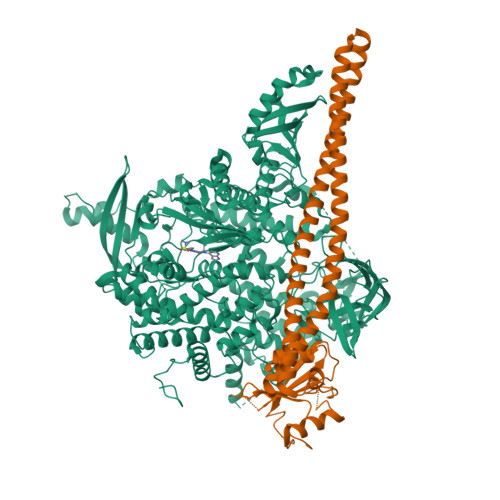Structure-Based Drug Design of Novel Potent and Selective Tetrahydropyrazolo[1,5-a]pyrazines as ATR Inhibitors.
Barsanti, P.A., Aversa, R.J., Jin, X., Pan, Y., Lu, Y., Elling, R., Jain, R., Knapp, M., Lan, J., Lin, X., Rudewicz, P., Sim, J., Taricani, L., Thomas, G., Xiao, L., Yue, Q.(2015) ACS Med Chem Lett 6: 37-41
- PubMed: 25589927
- DOI: https://doi.org/10.1021/ml500353p
- Primary Citation of Related Structures:
4WAF - PubMed Abstract:
A saturation strategy focused on improving the selectivity and physicochemical properties of ATR inhibitor HTS hit 1 led to a novel series of highly potent and selective tetrahydropyrazolo[1,5-a]pyrazines. Use of PI3Kα mutants as ATR crystal structure surrogates was instrumental in providing cocrystal structures to guide the medicinal chemistry designs. Detailed DMPK studies involving cyanide and GSH as trapping agents during microsomal incubations, in addition to deuterium-labeled compounds as mechanistic probes uncovered the molecular basis for the observed CYP3A4 TDI in the series.
Organizational Affiliation:
Global Discovery Chemistry Oncology, Novartis Institutes for Biomedical Research , 5300 Chiron Way, Emeryville, California 94608, United States.


















